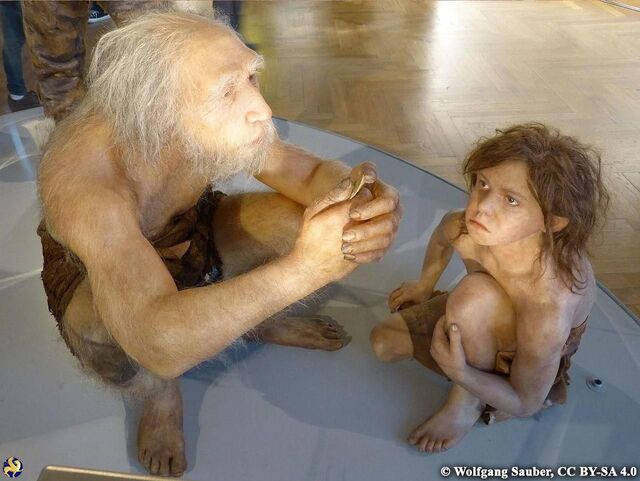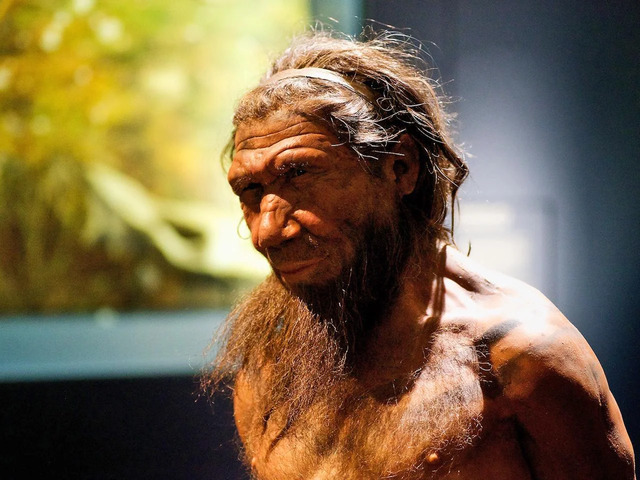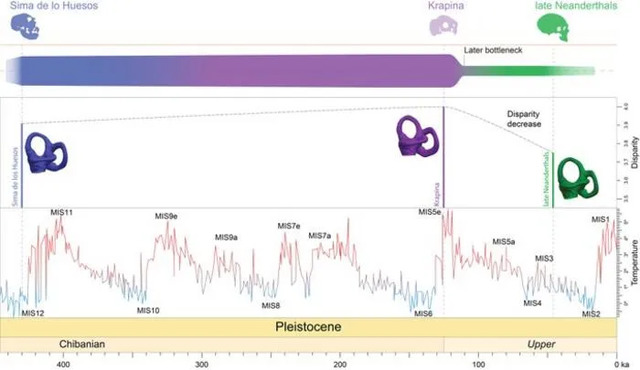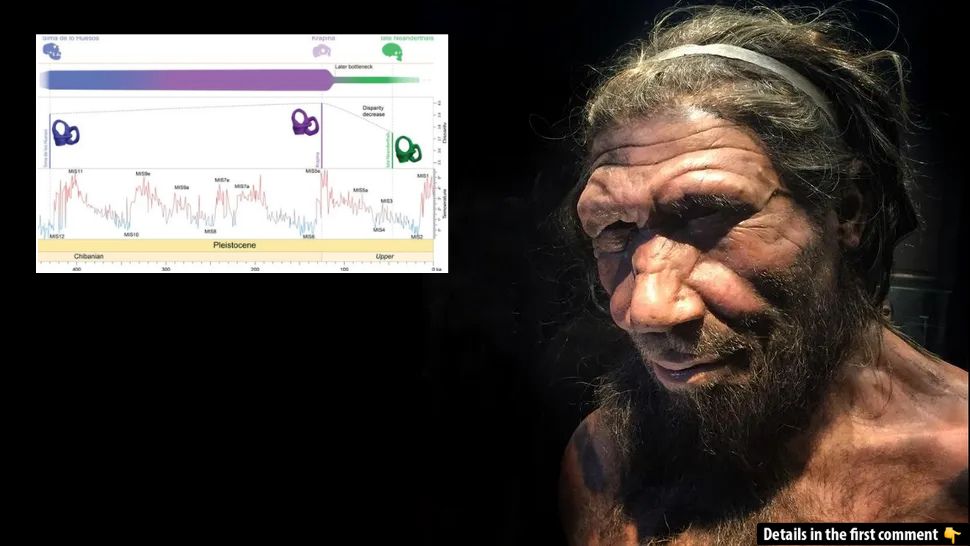For decades, the Neanderthals have captivated scientists and historians alike, offering a glimpse into our closest evolutionary relatives. New research, however, has revealed a surprising twist in their story: a major genetic bottleneck around 110,000 years ago. This discovery reshapes our understanding of Neanderthal history, suggesting that their decline may have been driven by a sudden loss of genetic diversity. In this article, we’ll explore how this bottleneck event occurred, its potential causes, and the lasting impact it had on the Neanderthal population.
Introduction: Neanderthals and the Mysterious Population Bottleneck
Neanderthals, a species of hominids that lived in Europe and parts of Western Asia, are believed to have been one of the last species to share a common ancestor with modern humans. Despite their widespread distribution across vast areas, they ultimately vanished around 40,000 years ago, leaving behind little more than traces of their existence in fossil records. However, their exact demise has been a subject of intense debate. One prevailing theory suggested that the Neanderthal lineage had always been small and isolated, struggling to maintain genetic diversity. A new study, however, has discovered compelling evidence of a significant population bottleneck that occurred approximately 110,000 years ago—long before their extinction—which drastically reduced their genetic diversity and may have played a key role in their eventual demise.

Video
Check out the video to learn how Neanderthals weren’t dumb cavemen – in many ways, they were just like us!
Unveiling Neanderthal Demographics: New Methodologies and Insights

The recent study, conducted by an international team of researchers, represents a major breakthrough in understanding Neanderthal evolution. Unlike previous studies that relied on ancient DNA to track genetic changes, this research focused on the morphology of the semicircular canals in Neanderthal skulls. These small, bony structures in the inner ear play a vital role in maintaining balance and spatial orientation. They are formed early in life and are genetically controlled, making them an excellent proxy for studying the genetic diversity of past populations.
Using advanced 3D imaging and mathematical modeling, the researchers examined the shape of the semicircular canals in Neanderthal fossils from various time periods, spanning nearly 400,000 years. What they found was startling: a sharp reduction in variation in the semicircular canals around 110,000 years ago, indicating a significant genetic bottleneck. This bottleneck likely resulted from environmental factors, demographic stress, or a combination of both. The study offers a new and valuable method for examining ancient populations, particularly when DNA preservation is poor or nonexistent, such as in the case of many Neanderthal fossils.
The Bottleneck Event and Its Impact on Neanderthal Diversity
A population bottleneck occurs when a species experiences a sharp reduction in its genetic diversity due to a dramatic decrease in its population size. This can happen for various reasons, including natural disasters, environmental changes, or competition for resources. The study’s findings point to a major bottleneck event occurring around 110,000 years ago, which significantly reduced the genetic variation within Neanderthal populations.

The research revealed that earlier Neanderthal groups, such as those from Sima de los Huesos (about 430,000 years ago), exhibited high levels of morphological diversity, similar to the early Neanderthals from Krapina (around 130,000 years ago). However, the later Neanderthals, dated to around 64,000 to 40,000 years ago, showed dramatically lower diversity in their inner ear morphology. This sudden reduction in genetic variation suggests that, for reasons yet to be fully understood, Neanderthal populations underwent a sharp decline in numbers, leading to a loss of genetic diversity that may have had long-term consequences for their survival.
Environmental and Climatic Factors: Potential Triggers for the Decline
The timing of the bottleneck event coincides with significant climatic changes in Europe and Western Asia during the Late Pleistocene. Researchers speculate that these shifts in the environment—such as changing temperatures, habitat loss, and fluctuating food resources—may have contributed to the Neanderthal population decline. The dramatic climate fluctuations during this period may have disrupted Neanderthal populations, causing them to become fragmented and isolated. This would have led to a reduction in gene flow, further exacerbating the genetic bottleneck.
Additionally, the study suggests that the Neanderthals’ increasingly fragmented population structure, caused by environmental stress and competition for resources, may have left them vulnerable to other factors, such as the encroachment of modern humans and the expansion of their territories. It’s possible that the Neanderthals’ limited genetic diversity weakened their ability to adapt to these new challenges, making them more susceptible to extinction.
Neanderthal Evolution: Challenging Previous Theories
This new research challenges several long-standing theories about Neanderthal evolution. Previous studies suggested that Neanderthals may have been a small, isolated population from the outset, struggling with genetic bottlenecks early in their history. However, the findings from this study reveal that Neanderthals were, for much of their existence, a relatively stable and genetically diverse species. It was only in the later stages of their evolution, around 110,000 years ago, that they experienced a sharp decline in diversity, signaling a dramatic shift in their demographic history.
These findings also challenge the notion that Neanderthal extinction was solely due to competition with modern humans. While interactions with early Homo sapiens certainly played a role, the genetic bottleneck suggests that Neanderthal populations were already weakened by internal factors long before the arrival of modern humans in their territories.
Comparing Neanderthal Groups: Regional and Temporal Variations
The study’s comparison of Neanderthal groups from different regions and time periods offers valuable insights into their demographic history. The researchers analyzed specimens from various sites, including Sima de los Huesos in Spain, Krapina in Croatia, and later Neanderthals from France, Belgium, and Israel. These comparisons revealed significant regional and temporal variations in Neanderthal populations, with earlier groups showing higher genetic diversity than later groups.
The differences in genetic diversity across these regions suggest that Neanderthals were not a monolithic group but were instead diverse populations that adapted to different environmental conditions over time. However, the sharp decline in diversity seen in the later Neanderthal groups suggests that this adaptability was limited, and their survival was increasingly dependent on the maintenance of larger, genetically diverse populations.
Video
Watch the video on seven million years of human evolution – it’s an incredible journey through our past!
Conclusion: Understanding Neanderthal Decline Through Science and Fossils
The study of Neanderthal genetics and evolution is a rapidly evolving field, with new methods and discoveries continually reshaping our understanding of this ancient species. The recent findings on the Neanderthal population bottleneck provide crucial insights into the demographic history of Neanderthals, suggesting that their decline was not solely the result of external factors, such as competition with modern humans, but also internal factors, such as environmental stress and genetic isolation.
By using the morphology of the semicircular canals as a proxy for genetic diversity, researchers have opened up new possibilities for studying ancient populations, even when DNA preservation is poor. These findings also challenge previous assumptions about Neanderthal evolution, suggesting that they were once a genetically diverse and adaptable species, only to experience a sharp decline in diversity long before their eventual extinction.
As we continue to explore the complexities of Neanderthal history, these discoveries not only deepen our understanding of this fascinating species but also illuminate the broader processes of evolution, adaptation, and extinction that shaped the course of human history.



